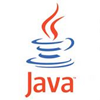 How to get JDBC Connection with MySQL in Java using maven dependency. establis JDBC connection.
How to get JDBC Connection with MySQL in Java using maven dependency. establis JDBC connection.
1. Overview of Get JDBC Connection
include mysql connector dependency jar in application lib for getting jdbc connection.
Include mySQL connector java dependency in pom.xml file , if using maven as build tool in your application:
mysql mysql-connector-java 5.1.37
/**
* This method is used to get JDBC connection from MySQL.
*
* @return
*/
public static Connection getDBConnectionMySql() {
Connection aConnection = null;
try {
Class.forName("com.mysql.jdbc.Driver");
aConnection = DriverManager.getConnection(
"jdbc:mysql://localhost:3306/spring_mvc", "root", "root");
} catch (Exception exc) {
exc.printStackTrace();
// logger.error("getDBConnection():Error in database "+exc.getMessage());
} finally {
// release resource if done with
}
return aConnection;
}
2. get Connection from MS-SQL database
– add jar file in you project lib or classpath
– or add dependency in you pom.xml maven metadata configuration file.
/**
* This method is used to get JDBC connection from MS-SQL server.
*
* @return
*/
public static Connection getDBConnectionMSSQLServer() {
Connection aConnection = null;
try {
Class.forName("com.microsoft.sqlserver.jdbc.SQLServerDriver");
aConnection = DriverManager.getConnection("jdbc:sqlserver://localhost:1433;DatabaseName=dbname", "userid", "pwd");
} catch (Exception exc) {
logger.error("getDBConnection():Error in database "+exc.getMessage());
}
return aConnection;
}
Once you done with connection release the occupied resources, you know this very valuable resource, if you not release and not using connection pooling , you may not at particular point of time.
3. Release Connection
/**
* This method release the database connection
* @param aConnection
* @throws SQLException
*/
public static void releaseConnection(Connection aConnection) {
if (aConnection != null) {
try {
aConnection.close();
} catch (SQLException e) {
//logger.error("releaseConnection():Error in closing connection"+e.getMessage());
//System.out.println(" exception : " + e.getMessage());
}
}
}
4. Release Statement
/**
* This method release the database Statement
* @param aConnection
* @throws SQLException
*/
public static void releaseStatement(Statement aStatement) {
if (aStatement != null)
try {
aStatement.close();
} catch (SQLException e) {
//logger.error("releaseStatement():Error in closing statement"+e.getMessage());
}
}
5. Release ResultSet
/**
* This method release the ResultSet
* @param aConnection
* @throws SQLException
*/
public static void releaseResultSet(ResultSet aResultSet) {
if (aResultSet != null)
try {
aResultSet.close();
} catch (SQLException e) {
//logger.error("releaseResultSet(): Error in closing resultset"+e.getMessage());
}
}
6. Reference
Oracle Java JDBC connection for more details.
I hope you enjoyed this post of how to get jdbc connection , visit Core Java tutorial for more details.
Hello it’s me, I am also vvisiting this web site on a regular basis,
this web page is actually nice and the viewers are truly sharing
nice thoughts.
I was looking this types of post for jdbc connection.. good one
good one dear keep writing…
helpful post
good explanation